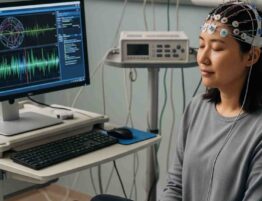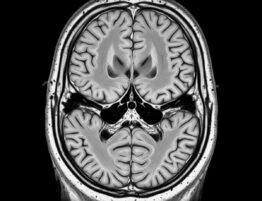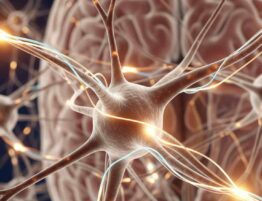There are many autoimmune illnesses of the nervous system (NS). This includes the brain and spinal cord, but one of the most widespread is multiple sclerosis (MS). This is a chronic illness. The immune system mistakenly attacks the protective sheath (myelin). It characterizes MS. The disease can cause the nerves to deteriorate. They also may become permanently damaged. But the exact cause of MS is unknown. It is usually believed to involve a combination of genetic and environmental factors.
MS is typically diagnosed through medical history, neurological exams, and MRI. There is no cure for such illness, but some treatments are available. They can help manage symptoms. Let’s discuss the life expectancy and key characteristics of multiple sclerosis.
What exactly is Multiple Sclerosis?
This is a serious condition affecting the central nervous system (CNS). It leads to brain dysfunction in transmitting and receiving signals. The destruction of myelin-type substances reduces the transmission of nerve impulses. The electrically insulating shell is destroyed, and as a result, sclerotic scars usually form.
Maintaining the patient’s health with this condition depends on timely diagnosis. Quality treatment is also important. As a result of this disease, damage to the membranes of nerve structures occurs. If the disease is left untreated, several neurological disorders develop.
In the medical literature, you can find the following names – multiple and disseminated sclerosis. An autoimmune disease develops against a background of immune dysfunction. As a result, the myelin sheaths become foreign and are attacked. Over time, the disruption of the transmission of electrical impulses from the brain to the organs appears. Intense attacks lead to paralysis, various partial paralysis, and decreased visual function.
Who is most likely to be affected by Multiple Sclerosis?
This condition primarily affects specific populations more than others. Let’s explore the key factors. Among them are:
- Women: They are 2-3 times more likely to develop MS than men.
- Young adults: Typically diagnosed between ages 20 and 50.
- People of Northern European descent: MS is more common in this ethnic group.
- Individuals living in temperate climates: Particularly those farther from the equator.
- People with a family history of MS: Especially those with affected first-degree relatives.
- Smokers: As smoking is a known risk factor.
- Those who were obese in childhood or adolescence.
- People who have had Epstein-Barr virus (mononucleosis).
- Individuals with other autoimmune conditions.
There is no known multiple sclerosis prevention. Understanding these risk factors can help in early detection and management.
Digging into the Causes
An abnormal immune response usually causes such a condition. It attacks the CNS, specifically the myelin sheath covering nerve fibers. This results in inflammation and damage, disrupting nerve signals. The exact trigger is unknown. This is believed to involve genetic and environmental factors.
The role of the immune system in Multiple Sclerosis
This immune system targets the myelin sheath. This is a protective layer around nerve fibers in the CNS. This autoimmune attack leads to inflammation and damage. It disrupts the transmission of nerve signals. The damaged myelin forms scar tissue (sclerosis), further impairing nerve function. The immune system’s role is central in initiating and perpetuating the disease. This makes MS a chronic and progressive condition.
Risk factors associated with Multiple Sclerosis
Several risk factors increase the likelihood of developing MS:
- Age: Most commonly diagnosed between 20 and 50 years.
- Gender: Women are more likely to develop MS than men.
- Genetics: A family history of MS increases risk.
- Geography: Higher prevalence in regions farther from the equator.
- Vitamin D Deficiency: Lower levels are linked to higher risk.
- Infections: Certain viruses, like Epstein-Barr, are usually associated with MS.
- Smoking: Increases the risk and severity of MS.
Understanding these factors is crucial. It helps with early detection and management of the disease across different stages of multiple sclerosis.
Recognizing the Symptoms of Multiple Sclerosis
Clinical presentations are diverse. They often include:
- fatigue;
- muscle weakness;
- coordination issues;
- vision problems;
- numbness or tingling;
- cognitive changes are also common.
Physical symptoms
They can significantly affect daily life. Muscle weakness and spasticity often lead to mobility challenges. Fatigue is a frequent and debilitating symptom. Numbness, tingling, and pain are common. Multiple sclerosis eye signs include blurred or double vision and optic neuritis. They can cause vision loss. Bladder and bowel dysfunction can also occur. It further impacts the quality of life.
Emotional and mental health impacts
Such a condition significantly affects emotional and mental health. Depression, anxiety, and mood swings are common. This is because of the chronic and unpredictable nature of the disease. Memory issues and difficulty concentrating can arise. Multiple sclerosis can cause strange feelings in the head, such as dizziness or a feeling of pressure. Addressing these mental health aspects is important for comprehensive treatment.
Different Stages of Multiple Sclerosis
This condition progresses in distinct stages. Specific patterns of symptom development and progression typically characterize each. Understanding these stages is vital for effective management and treatment. The disease can vary significantly in severity and impact on individuals.
Relapsing-Remitting MS (RRMS)
This is the most common form of MS. Clearly defined attacks of new or worsening neurological symptoms (relapses) appear. They are typically followed by partial or complete recovery (remission) periods. During remissions, all signs may disappear, or some may continue and become permanent. RRMS can transition to secondary-progressive MS over time.
Primary-Progressive MS (PPMS)
A gradual worsening of neurologic function often marks such a multiple sclerosis stage. This is from the onset of symptoms, without early relapses or remissions. PPMS affects about 10-15% of people with MS. Such signs tend to be typically diagnosed later in life compared to RRMS. Progression can be steady. Also, it may include occasional plateaus and minor improvements.
Secondary-Progressive MS (SPMS)
This stage follows an initial relapsing-remitting course of multiple sclerosis. Over time, SPMS transitions into a steadily worsening condition with fewer or no relapses. Disability gradually increases as the disease progresses. A continuous decline in neurological function characterizes SPMS. This makes effective management crucial to maintain quality of life. Also, a treatment plan slows the progression of symptoms.
Progressive-Relapsing MS (PRMS)
This is a rare form of MS that combines steadily worsening symptoms with acute relapses. Patients experience a permanent decline in neurological function from the very beginning. Sudden episodes of increased severity punctuate them. PRMS is aggressive and challenging to manage, often leading to significant disability. Addressing this type is vital. This is vital to optimizing patient care during multiple sclerosis’s final stages.
Diagnosing Multiple Sclerosis
Diagnosing involves a comprehensive approach to identifying characteristic signs. This includes a thorough medical history, physical examination, and specialized tests. They are MRI scans and cerebrospinal fluid analysis. Such methods help to detect inflammation and rule out other conditions.
Medical history and physical examination
Diagnosing begins with a detailed medical history. It helps to document symptoms, their onset, and progression. A physical examination assesses neurological function. It looks for abnormalities in vision, coordination, strength, and reflexes. These initial steps help identify patterns consistent with MS and guide further testing. A thorough history and physical exam distinguish MS from other neurological disorders.
Use of Magnetic Resonance Imaging (MRI)
This is a critical multiple sclerosis diagnosis criteria. MRI provides detailed brain and spinal cord images. It detects lesions or areas of damage caused by demyelination, a hallmark of MS. MRI can reveal active inflammation and chronic lesions, helping to confirm the diagnosis. Serial MRIs can also monitor disease progression and response to treatment. This makes it essential in managing MS.
Checking for signs of inflammation in cerebrospinal fluid (CSF)
Analyzing it through a lumbar puncture helps diagnose MS. CSF detects signs of inflammation and immune activity in the central nervous system. The presence of oligoclonal bands in CSF indicates an abnormal immune response. This is commonly seen in MS patients. Cerebrospinal fluid analysis and other diagnostic tools are part of a comprehensive diagnosis. They also exclude various processes.
Treatment Options for Multiple Sclerosis
Medications alter the course of MS. They reduce the frequency of relapses, delaying disease progression. Also, medications manage symptoms. These treatments aim to suppress the immune system’s harmful response. Also, they promote neurological function. Treatment plans improve the quality of life. This is important for individuals with MS.
Disease-modifying therapies (DMTs)
These are medications designed to alter the course of MS. They reduce the frequency of relapses, delaying disease progression and managing symptoms. These treatments aim to suppress the immune system’s harmful response. Also, they promote neurological function. Treatment plans improve the quality of life for individuals with MS.
Managing symptoms through medication and physical therapy
These points can easily manage fatigue, spasticity, and mobility issues. Medications target specific symptoms. Physical therapy helps maintain strength, flexibility, and overall mobility. Adaptive devices and assistive technologies also enhance daily function. Self-care for people with multiple sclerosis includes:
- Avoiding heat exposure: Such a method helps manage heat sensitivity. This is a common issue in MS.
- Regular medical check-ups: Monitor disease progression. Also, it adjusts treatment plans as needed.
Lifestyle modifications and support
Beyond medical treatments, these changes are important in managing MS. These include:
- maintaining a balanced diet to manage multiple sclerosis;
- regular exercise to improve strength and coordination;
- managing stress to minimize flare-ups.
Support groups and counseling can provide emotional support. They also offer strategies for coping with the challenges of living with MS. A holistic approach to care helps individuals maintain independence. Also, it lets them optimize their quality of life.
Living with Multiple Sclerosis
Living with this condition involves adapting to the challenges. They are posed by the disease while maintaining a fulfilling life. Individuals need proper management. Professional support is also essential. So they can effectively manage symptoms. Patients also may enhance their quality of life.
How to maintain a positive mindset
This aspect is important in managing MS. The common strategies include:
- Staying Informed: Understanding the disease empowers individuals to make informed decisions.
- Setting Realistic Goals: Focus on achievable milestones. It will help to maintain motivation.
- Practicing Gratitude: Appreciating daily blessings fosters resilience.
- Engaging in Activities: Pursuing hobbies and interests boosts mood.
- Seeking Support: Connecting with others facing similar challenges. They provide perspective and encouragement.
Individuals should prioritize Multiple sclerosis self-care and stay connected. So they can foster resilience. Individuals may maintain a positive outlook despite the challenges of MS.
The importance of building a supportive community
Building a supportive community is essential for those with MS. A strong support network:
- Provides emotional support during difficult times;
- Offers practical assistance with daily tasks;
- Share information and resources about managing MS;
- Reduces feelings of isolation and loneliness;
- Promotes advocacy and awareness within the community.
Individuals should connect with support groups and online communities. They also must collaborate with local MS organizations.
Contact Lone Star Neurology
If you’re seeking expert care for neurological conditions MS, contact us. We have a team of dedicated specialists. Our healthcare providers offer comprehensive evaluation. Also, we provide personalized treatment plans to meet your needs.
Making an appointment
To schedule an appointment at Lone Star Neurology, call our office directly. You may also visit our website to request an appointment online. Our staff will assist you in finding a convenient time for your consultation. Early diagnosis is vital in managing multiple sclerosis and its various symptoms. Don’t hesitate to reach out for timely evaluation and care.
Available services at Lone Star Neurology
Our company provides a wide range of services tailored to neurological health. These include diagnostic evaluations. MRI scans and neurological exams diagnose conditions like MS. Treatment options accurately encompass:
- disease-modifying therapies (DMTs);
- symptom management strategies;
- rehabilitative services to enhance the quality of life.
Our compassionate team will support you throughout your journey with multiple sclerosis to maximize the life expectancy. We ensure comprehensive care and ongoing support.













Please, leave your review
Write a comment: